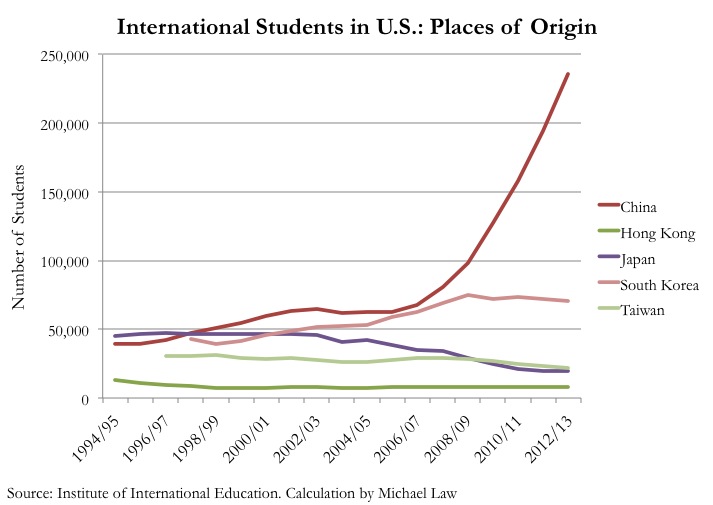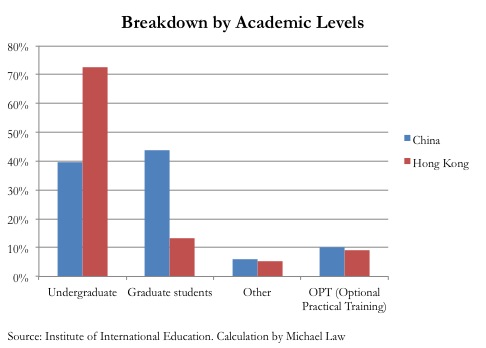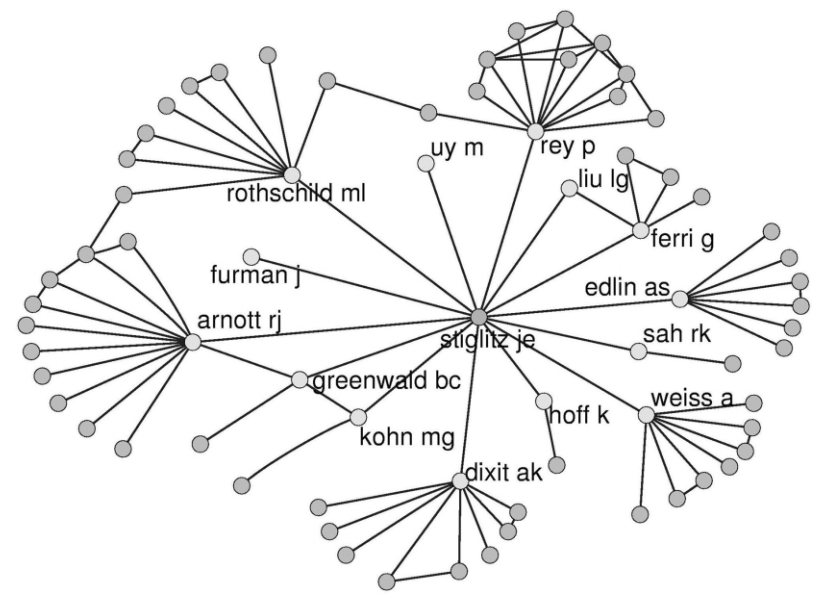
The one thing I am impressed the most with my stay here in the US is the creativity and entrepreneurship of the young people. When there is a problem, there is always a solution–and people can make money from it. I once moaned about the difficulty of getting a taxi in Boston, and have recently found that a new (okay, it has been there for a while actually) mobile app called Uber is now transforming the entire cab industry, not just in the US, but perhaps globally. I have recently taken my first ride with Uber, and was pleasantly surprised by the quality and ease of service. For example, I didn’t have to pay the driver (directly); if you want to send your friend home, using Uber will certainly be easier than giving him/her a $50 bill. You can also split the fare easily for multiple passengers and forget about the inconvenience and embarrassment for chasing after your friend for a mere five bucks. As the Economist magazine noted, the idea is simple: “The app makes it easier to bring together drivers, whose cabs are often empty, and passengers. Time and fuel are saved. Money is made.”
As I dug deeper to understand the business model of Uber, I am (again) surprised to learn that Uber has indeed been already running in 65 cities in 23 countries (growing from 49 cities in 19 countries just two months ago). In Asia, it runs in Taipei, Shanghai, Toyko, Seoul, Guangzhou and even Shenzhen… but not Hong Kong. Perhaps it is because it is easy enough to get a taxi in Hong Kong already? But look, Uber is also operating in big cities like New York and London. Hailo, a similar app founded in London by cabbies and techies three years ago, says 60% of the city’s black-cab drivers are now on its books. Well, to be precise, Hailo and Uber are similar apps but their business models are quite different. As the Economist magazine explained:
Wherever it goes, Hailo works only with taxis that may be hailed in the street. It starts by signing up cabbies, who have their own app on which they can record journeys and fares, and which alerts them to “bursts” of demand (as people leave a concert, say). The app for passengers comes later… Cabbies will earn points for accepting “e-hails” when demand is at its peak and work is easy to find on the street; the highest scorers will have priority when work is scarce…
Uber has chosen the route of competition rather than co-operation with local cabbies and taxi firms. Most of its business is with town cars and sport-utility vehicles. A cheaper range, uberX, competes directly with ordinary cabs. Parisians may plump for a two-wheeled uberMOTO. In a few cities, though, it has a cab service, uberTAXI, working with local operators.
But in any case, these mobile apps are distorting how the taxi industry has been running for ages. Without doubt, this would create unease to the incumbents. It is only natural to expect that the existing taxi operators would do whatever it takes to stop them, including lobbying the governments. As the Economist wrote on:
Taxi operators have lobbied municipal regulators furiously to keep the invader out. Customers may purr about the ease of summoning a smart town car, especially where taxis are old, dirty or scarce. Yet the regulators are often sympathetic to the taxi companies’ pleas. However, a Californian regulator recently approved another upstart model, ride-sharing, exemplified by Lyft, a San Francisco firm: private drivers offer rides in their own cars in exchange for a “donation”. Local taxi groups have vowed to fight on.
Uber has had to battle in Washington, DC, where the local taxi commission tried in effect to stop it from using small, low-emission cars. In Houston, Miami and Portland Uber is being thwarted by regulators requiring it to charge minimum fares of up to $70 and to make bookings at least 30 or 60 minutes before a trip. Travis Kalanick, Uber’s founder, has promised to spend some of the $258m raised this summer on fighting off “protectionist, anti-competitive efforts” as well as on expanding into new markets.
And regulators, who doubt the legality of these apps and say new laws are required to protect consumers from being harmed by such apps, are proposing numerous guidelines (perhaps after being lobbied by the existing taxi operators) that would effectively force Uber to cease operations in the United States. As the New York Times reported, Uber is facing lawsuits filed by San Francisco cabdrivers and Chicago car service companies, and a $20,000 fine from the California Public Utilities Commission.
But what is truly interesting to me is that–somewhat contrary to my perception–Uber can actually raise taxi drivers incomes, not lower them over time. As noted by Felix Salmon:
The key datapoint came in October, when Uber said in a blog post that when it lowered fares for its UberX product, its drivers’ income actually went up rather than down: in Boston, it rose by 22% per hour, which is a lot of money. The result has been that UberX is now priced near or below prevailing taxi rates in most cities: in Washington DC, for instance, UberX costs 18% less than a taxi. And the drivers of those cars are making significantly more money than they would make if they were driving a cab.
This has important public policy implications for Hong Kong, where taxi drivers hardly shared the benefits of a regular rise in taxi fare because the the cost of leasing a cab will rise too (while at the same time the amount of passengers would decrease). This is very much a simple economics lesson about “elasticity”, or in plain language, “bargaining power”. As Felix Salmon explains:
[I]n this case, the cab drivers — at least the ones who lease their cabs on a per-shift basis — should think of themselves less as small business owners, selling their services to passengers, and more as valuable employees, selling their services to either taxi-fleet owners or to companies like Uber. Looked at that way, more competition means higher wages, not lower income.
Precisely because taxi fares are highly regulated, cab drivers have historically had almost no bargaining power when it comes to their own income. The fares are set, and even if fares rise, the fleet owners will waste no time in taking advantage of that rise in fares to simply raise the cost of leasing a cab. Especially in New York, where there’s a limited number of medallions, anybody who wants to drive a taxi basically has to just accept whatever deal is offered.
The taxi industry in Hong Kong is among one of the most highly regulated industries in Hong Kong, with the government stopping issuing licenses in 1994, limiting entrants, and fixing taxi fares (drivers cannot cut fare). Existing licenses are transferable and tradable, but given limited supply, their prices have doubled in the past five years, to HK$7 million (almost US$1 million). Hong Kong may not need more taxis, but new competition from the tech companies can change how the industry is structured, and would likely raise the welfare of the taxi drivers. It would be interesting to see whether the Hong Kong government has the political will to push through the changes.












